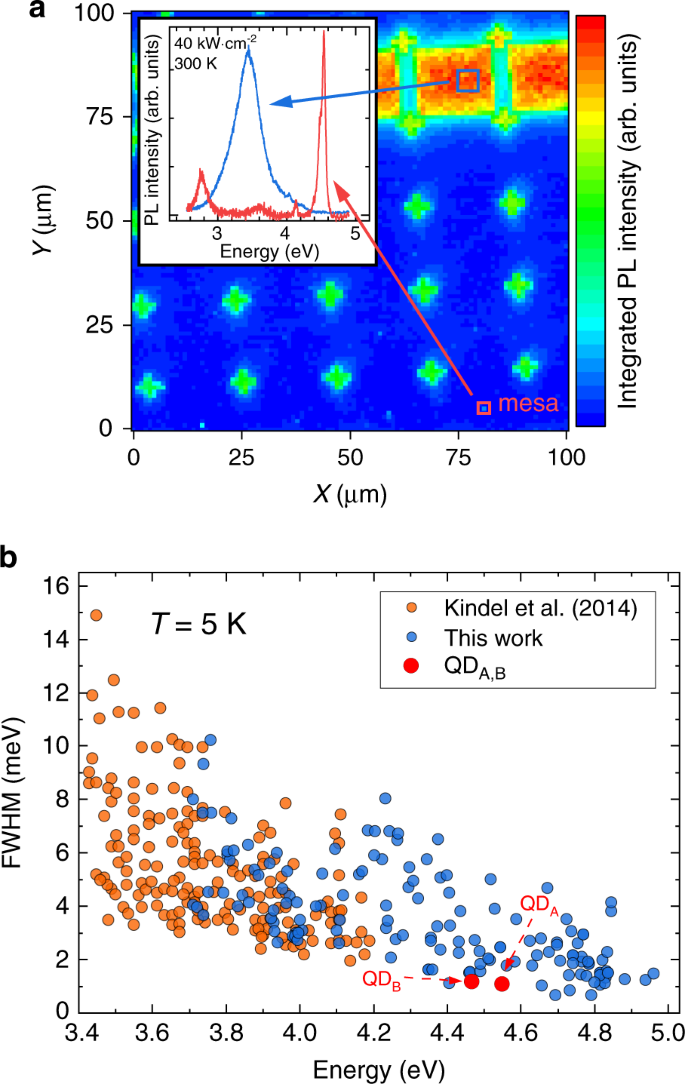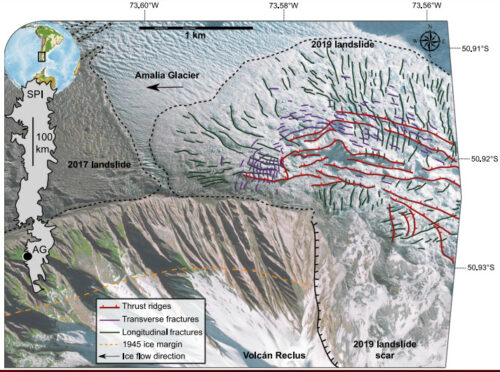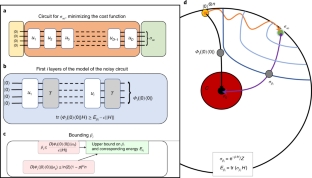2022-05-05 スイス連邦工科大学ローザンヌ校(EPFL)
EPFLの科学者たちは、室温で動作し、コスト効率の高いシリコン基板上に成長した量子ドットをベースにした「単一光子エミッター」の一つを設計しました。
EPFLのニコラ・グランジャン教授率いる研究者たちは、コスト効率の高いシリコン基板上にワイドバンドギャップ半導体量子ドットを成長させ、「明るく、純粋な」SPEを開発した。
<関連情報>
- https://actu.epfl.ch/news/single-photon-emitter-takes-a-step-closer-to-quant/
- https://www.nature.com/articles/s41377-022-00799-4
自己組織化したGaN/AlN量子ドットにおける単一光子発光と再結合ダイナミクスの研究 Single photon emission and recombination dynamics in self-assembled GaN/AlN quantum dots
Johann Stachurski,Sebastian Tamariz,Gordon Callsen,Raphaël Butté & Nicolas Grandjean
Light: Science & Application Published: 28 April 2022
DOI:https://doi.org/10.1038/s41377-022-00799-4

Abstract
III-nitride quantum dots (QDs) are a promising system actively studied for their ability to maintain single photon emission up to room temperature. Here, we report on the evolution of the emission properties of self-assembled GaN/AlN QDs for temperatures ranging from 5 to 300 K. We carefully track the photoluminescence of a single QD and measure an optimum single photon purity of g(2)(0) = 0.05 ± 0.02 at 5 K and 0.17 ± 0.08 at 300 K. We complement this study with temperature dependent time-resolved photoluminescence measurements (TRPL) performed on a QD ensemble to further investigate the exciton recombination dynamics of such polar zero-dimensional nanostructures. By comparing our results to past reports, we emphasize the complexity of recombination processes in this system. Instead of the more conventional mono-exponential decay typical of exciton recombination, TRPL transients display a bi-exponential feature with short- and long-lived components that persist in the low excitation regime. From the temperature insensitivity of the long-lived excitonic component, we first discard the interplay of dark-to-bright state refilling in the exciton recombination process. Besides, this temperature-invariance also highlights the absence of nonradiative exciton recombinations, a likely direct consequence of the strong carrier confinement observed in GaN/AlN QDs up to 300 K. Overall, our results support the viability of these dots as a potential single-photon source for quantum applications at room temperature.



